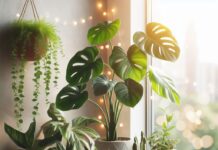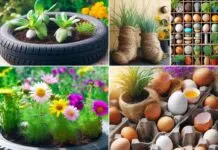With all the buzz about conserving the environment, many homeowners are now taking the sustainable route through gardening. When you have a space like a backyard or front yard, it’s a great option to have plants. This can house greeneries for your landscaping, flowering plants for aesthetics, and even a vegetable garden for food consumption.
Whatever your purpose in coming up with a garden, this is a good way to save nature. You can have trees or shrubs, too. But once you start with it, you’ve got to do your best in keeping it maintained, or else your garden will look more like a nuisance than something that’ll beautify your home or give you vegetables.
Say No To These Gardening Practices
If you’re starting a garden soon, there are certain things you must do to keep it well-protected. Otherwise, you may think your greens are still doing great when you’re already damaging them. Being aware of the malpractices would enable you to be a proficient gardener.
This article will help you become better by making you aware of some improper habits being done to plants. With this awareness, you can hopefully avoid doing these.
-
Not Knowing About The Kind Of Soil You Have
Not every garden is going to have the same soil quality. So before you start, it’s important to know and understand the kind of soil you have. With this information, you can take better care of your plants by nourishing them based on what the land needs.
First, you may want to start with a soil test. This will give you an idea of what soil you’re working with and the nutrients needed to keep it balanced. For instance, there are types needing calcium, nitrogen, magnesium, or potassium. You don’t necessarily need to compensate with these nutrients through fertilizers. At the very best, you can opt for organic options achieved through composting.
To help you out, here are ways to improve your garden soil:
- Feed it with organic matter like kitchen scraps, garden debris, and fallen leaves;
- Grow and mature your soil through composting green manure;
- Supply it with natural sources of nitrogen such as blood, feather material, and green grass clippings;
- Fix it up with perlites, the white balls in potting soil, to modify the structure and make it better.
-
Using Too Many Chemicals
If you’re growing a vegetable garden for a farm-to-kitchen harvest, you have to keep it as organic, natural, and chemical-free as possible. If not, you’re only destroying the main purpose you have for coming up with your garden. You can’t say it’s sustainable when you’re still causing harm to the environment by using many chemicals.
Having synthetic substances for your garden is a tempting thing to do as it may make gardening easier, but they’re not necessarily good for you and nature in general. Plus, you’re also exposing yourself and your family to possible danger when you have these chemicals around your home.
Most importantly, the harm with these is they can seep through the soil and pass through the water. You may not be aware of it but these substances are also affecting your home’s water quality, putting your family’s health in jeopardy.
You can grow a beautiful and healthy garden without having to use fertilizers. The secret is in taking the time to remove the weeds, so you can keep your area looking vibrant and well-nourished. This may take time, but if you’re serious about gardening, you may even consider this as a hobby. It can be a relaxing way to give yourself a quiet time as you tend your garden.
-
Not Using The Right Gardening Tools
Of course, not everything is going to be done by hand. Thankfully, there are now tools you can utilize to help make gardening easier and to be more successful in this pursuit. So before you go full-force with planting, you need to ensure you have the right materials to help you out.
Once you head on to your home depot, you’re going to find many gardening tools and it’ll be confusing which ones you need. You just can’t get everything all at once, so it pays to learn how to narrow down your options.
To keep you guided, here’s a list of the most common tools used in gardening and their respective functions:
- Digging spade: useful for slicing through stony grounds;
- Hedge shear: needed for hedge and tree maintenance if you’ve got shrubs and trees in your garden;
- Rake: for gathering leaves falling off from trees;
- Trugs or baskets: you need to have one for sorting and organizing, which can come in handy for shifting compost and weeds or harvesting plants;
- Dutch hoe: this can come in handy when you’re cultivating a big garden, so you can shorten the work of weed-infested vegetable gardens.
-
Watering Plants When It’s Hot
There’s a right time for watering your garden. Your plants might be needing more water when it’s hot, but this doesn’t mean you should immediately water them when the temperature is scorching. Proper pacing is significant for their survival.
Watering your plants when it’s too hot is a common mistake difficult to undo. Rather than commit this, here are some tips you can follow for better watering of your plants:
- Focus on watering the roots because this is the part needing water the most to absorb moisture and deliver it to the rest of the plants;
- Water only when needed, so reduce the frequency during the rainy season;
- Always water your plants after repotting.
-
Not Putting Enough Diversity In Plants
It’s recommended to have your garden looking diverse. If it isn’t, then you’re making your yard miss out on its full potential. Don’t just focus on the plants you’re particularly fond of. If there isn’t enough variety of plants, you’re making it less attractive to pollinators. This means hampering its ability to promote a healthy ecosystem right from your garden.
The solution to this problem is to have plants of different kinds and heights. You can have a balance of foliage, flowering plants, vegetables, shrubs, and trees. When you have enough pollinators, you’re also making your soil healthier.
-
Killing Worms
If your garden has worms, keep them and let them roam in your land. You don’t need to kill every single one of them. Particularly if you have a vegetable garden, these can help mulch your soil to make it better.
Rather than damaging your soil, worms do the opposite. Their waste can be absorbed and serve as a natural fertilizer. Then, when these organisms move around, they’re aerating the soil, which makes it easier for water to penetrate thoroughly and reach the roots even when it’s deep.
-
Overwatering
Along with watering your garden when the weather is too hot, another mistake that’s commonly committed concerning watering is having too much of it. Yes, plants need this to survive, but this doesn’t mean they can live and withstand overwatering. Plants only need the amount of water necessary for them to thrive. Any excess can do more harm than good.
To avoid this from happening, it’s important to know what plants you have in your garden since each has its own water needs and requirements. Create a watering schedule, so you can avoid overwatering them.
Here are some other guidelines you can follow when it comes to watering your plants:
- New plants will typically require more water than older plants do. You’ll need to water these at least two to three times a day. Once the seeds have germinated, it’s when you can reduce water frequency.
- Find ways to use recycled water, so you’re not consuming and wasting too much liquid. This begins with water runoffs from washing your produce, leftover water after using your washing machine, and excess water from bathing.
Accordingly, these are the signs to help you determine whether you’re overwatering or under watering your plants:
- It has wilted and yellow leaves;
- It smells moldy;
- It looks limply and tired.
-
Overcrowding
If you’re trying to create a lush garden feel with so much foliage, one of the dangers you may mistakenly commit is overcrowding. It’s normal to have a goal of not having bald spots. But plants too close to each other would hinder their ability to grow and flourish, doing more harm than good. You can still create a cozy atmosphere even if you’re going to space the plants.
Conclusion
As you can see, there are many mistakes even those with a green thumb can make. No one’s exempted from these errors, especially when you’re still learning your way around. But like anything, gardening is a learning process and you’d be better as you go on.
The first step toward not doing the common mistakes is to be aware of the improper practices. With such, you can become a more prepared and informed gardener even if you’re still a beginner. Take note of the things mentioned here and gradually adjust your approach to take care of your garden.










